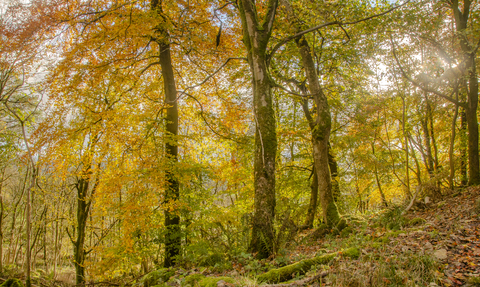Seata Quarry Nature Reserve
Location
Know before you go
Dogs
When to visit
Opening times
Open at all times. We recommend a 1 hour trip for this reserve but it is easy to combine with our other local reserves: Newbiggin Pastures, Semer Water and Leyburn Old Glebe for a longer outing.Best time to visit
June to SeptemberAbout the reserve
Seata Quarry is packed with grasses: blue moor-grass is the most abundant, but the grass at the top of the class is the rare spiky fescue, a native of the Pyrenees. Look for two other non-native Pyrenean plants: round-leaved St John’s-wort and fairy foxglove. Other plants include bird’s-foot trefoil, purging flax, harebell, small scabious, field madder and biting stonecrop. The flowers attract six-spot burnet moth, and butterflies including common blue and ringlet. Curlew and grey partridge have nested in the surrounding fields.
Contact us
About
Blue moor-grass is the most abundant grass and its metallic blue flowers are impressive in April. Both meadow and hairy oat-grasses are frequent along with quaking grass, but the star of the grasses is the rare spiky fescue, a native of the Pyrenees.
Two other non-native Pyrenean plants occur: round-leaved St John’s wort can be seen on a ledge and fairy foxglove is abundant on the quarry walls. The thin soils have more typical calcareous grassland species with abundant bird’s-foot trefoil, purging flax, harebell and especially small scabious. In a damp autumn the autumn gentians can reach 20cms high. Where the soil is exceptionally thin field madder, parsley piert and biting stonecrop join the fairy foxglove. Four species of orchids also occur here.
In mid-summer six-spot burnet moth, common blue butterfly and ringlet enjoy the flowerrich habitat. Curlew and grey partridge have nested here and sometimes brown hares can be seen.
Sheep grazing within the nature reserve is limited to the winter months to allow over 100 plant species to flower. In autumn the deeper soils support a dense growth which is removed by strimming, raking and burning.
Seata Quarry is leased from Township of Aysgarth and was once used to supply stone to the local area. Some local properties retain the right to take stone, but practical difficulties prevent uptake, which is fortunate for the wildlife here!
Seasonal highlights
- Spring: Plants - Blue moor-grass; Cowslip; Early purple orchid; Fairy foxglove
- Summer: Plants - Spiky fescue; Round-leaved; St John's-wort; Small scabious; Fragrant orchid
- Autumn: Plants - Autumn gentian
- Winter: Birds - Grey partridge
Directions
Public transport
Buses from Leyburn and Hawes.
By car
The quarry lies north of the Aysgarth to Thornton Rust road in Wensleydale. A narrow green lane leaves this road ½ a mile from the junction with the A684 in Aysgarth, park at the start of the lane and walk to the nature reserve. After two right-angled bends the lane ends at the quarry entrance. Footpaths also link the quarry to the A684 and back to Aysgarth.

The autumn colours were even more beautiful when the sun came out
Photo Credit - Telling our Story Volunteer, Sara

